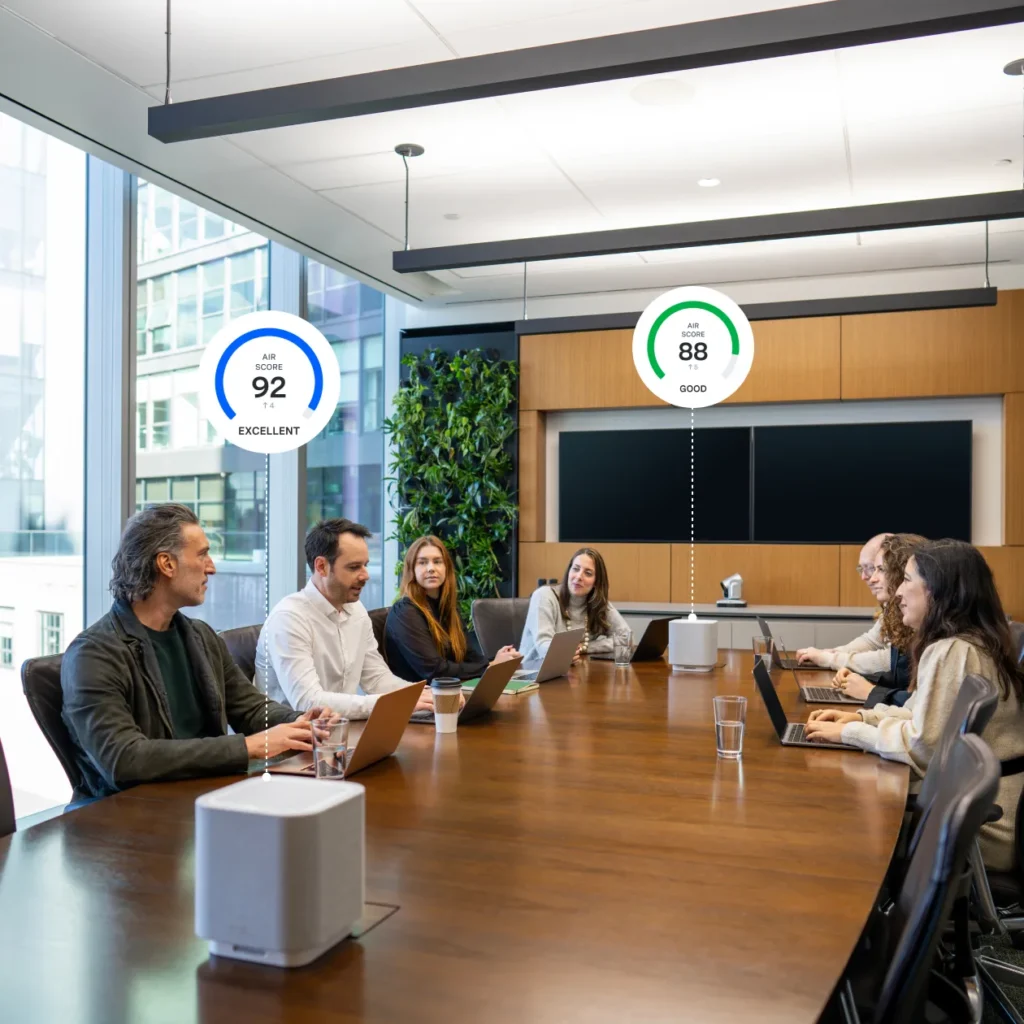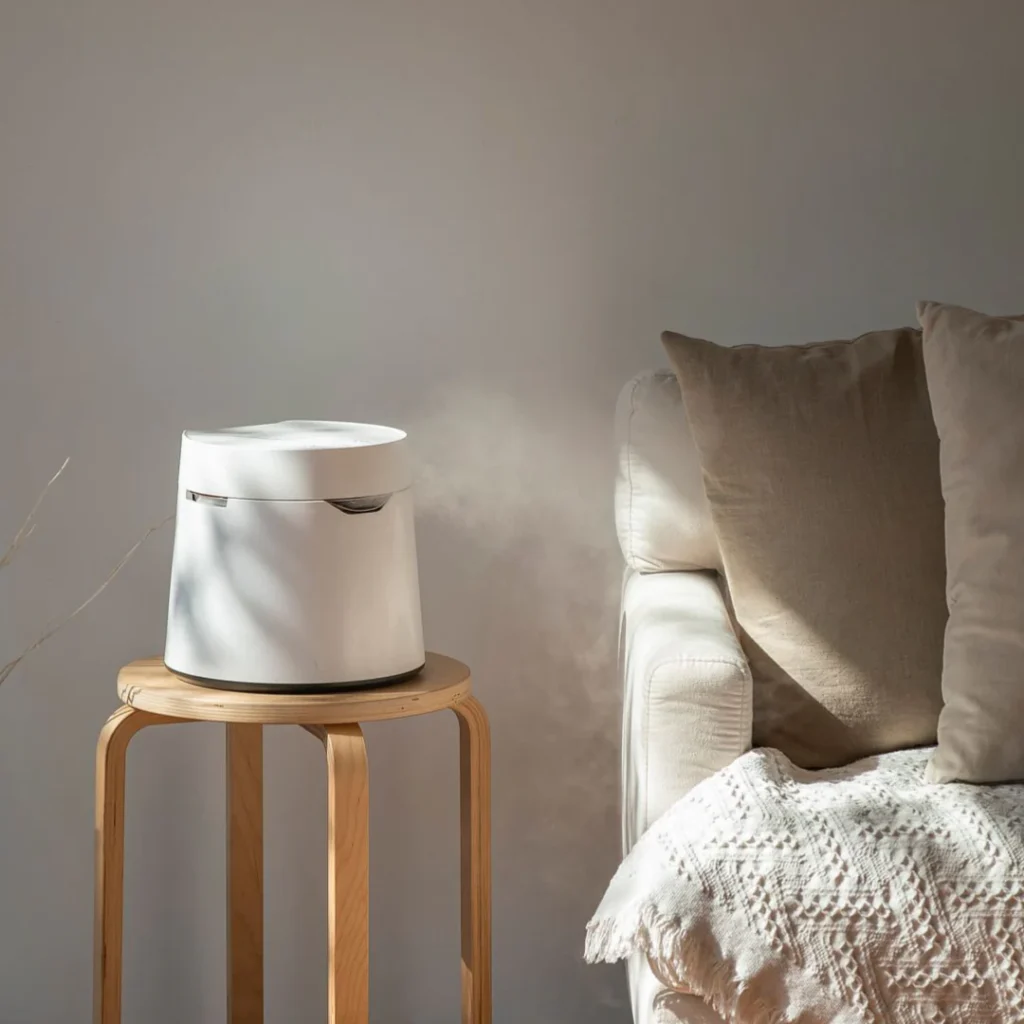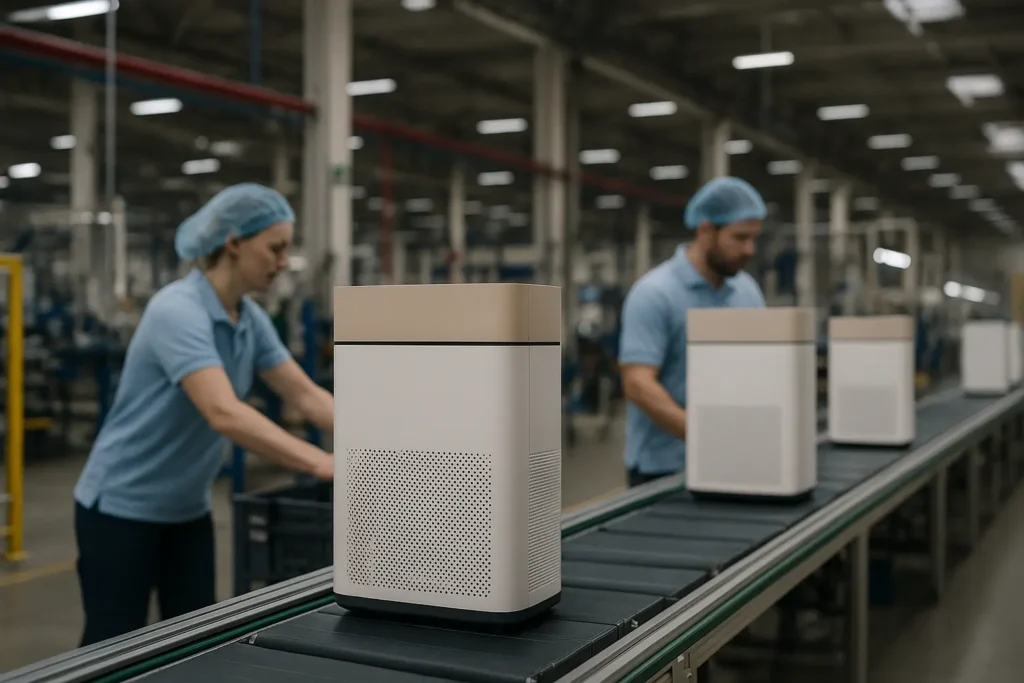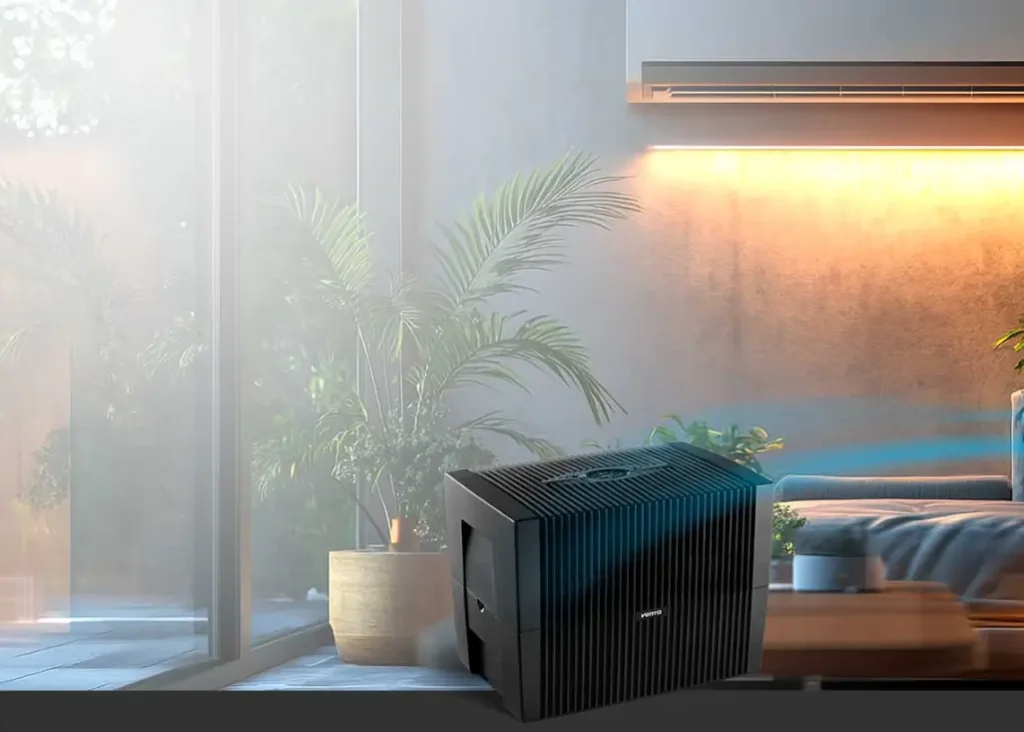Vous aimez votre animal de compagnie, mais il vous fait éternuer. Trouvez le meilleur purificateur d'air pour animaux de compagnie et ne vous souciez plus des odeurs et des allergènes.
Les purificateurs d'air sont une excellente méthode pour rendre votre maison confortable, propre et saine. Ils peuvent vous aider à mieux respirer et à réduire les allergènes présents dans l'air qui peuvent provoquer une congestion ou d'autres problèmes de santé. Mais qu'en est-il lorsque vous avez des animaux domestiques ? Avez-vous besoin d'un purificateur d'air spécifique pour animaux ?
Oui ! Même si la plupart des purificateurs d'air conviennent parfaitement à votre animal de compagnie, il est important d'en trouver un qui élimine les squames et autres allergènes de l'air. Un purificateur d'air spécifique aux animaux domestiques sera plus efficace que les autres modèles. Avec un tel choix, il peut être difficile de déterminer lequel convient le mieux à votre maison et à vos besoins.
Nous avons fait toutes les recherches pour vous ! Dans cet article, nous allons passer en revue nos cinq meilleurs choix pour le meilleurs purificateurs d'air pour les animaux de compagnie aujourd'hui. C'est parti !
Quelles sont les causes des allergies des animaux de compagnie ?

Image : https://www.news-medical.net/
De nombreux éléments peuvent être à l'origine d'allergies aux animaux, notamment les animaux, les squames et la salive. Ces allergènes ont tendance à être inhalés par le propriétaire de l'animal lorsqu'il est en sa présence.
Les squames sont des protéines qui se trouvent dans la couche externe de la peau et qui se détachent de votre animal de compagnie. Ces squames peuvent se trouver dans leur fourrure, leur salive et leur urine, ou même sur vos meubles s'ils s'y sont assis récemment. Les squames provoquent une réaction allergique lorsqu'elles entrent en contact avec votre nez et vos poumons.
La salive contient des protéines qui peuvent également provoquer une réaction allergique chez certaines personnes souffrant d'allergies aux animaux. Ces protéines se trouvent également dans la bouche des chats, des chiens et d'autres animaux de compagnie. Veillez donc à vous laver les mains après les avoir touchés !
Les animaux de compagnie souffrent-ils souvent d'allergies ?
Les allergies sont regrettables pour de nombreuses personnes, mais elles peuvent représenter un défi si vous vivez avec des animaux de compagnie. Une enquête de l'Asthma and Allergy Foundation of America a révélé que plus de la moitié des adultes souffrant d'asthme ont également des allergies. Et selon l'American Society for Testing and Materials (ASTM), un tiers des personnes allergiques aux chats réagissent à ces derniers à cause de leurs squames (pellicules de peau) et de leur salive.
De nombreuses personnes souffrent d'allergies aux animaux de compagnie. Il est donc important de connaître les signes et les symptômes de cette affection afin de pouvoir obtenir de l'aide en cas de besoin.
Les symptômes les plus courants sont les suivants
- Éternuements
- Nez qui coule
- Congestion de la poitrine ou de la gorge
- Démangeaisons des yeux et du nez
- Démangeaisons autour des yeux, du nez, de la bouche ou des oreilles
L'allergie chez les animaux de compagnie est-elle dangereuse ?
Les allergies chez les animaux de compagnie peuvent être tout aussi dangereuses que les allergies chez l'homme. Les allergènes provoquent une réaction immunitaire qui peut entraîner divers symptômes, notamment un écoulement nasal, des démangeaisons de la peau et des pattes, des éternuements, une toux, une irritation des yeux et même des crises d'asthme.
Dans certains cas, ces symptômes sont suffisamment légers pour ne pas mettre la vie en danger. Mais dans d'autres cas, ils peuvent être suffisamment graves pour nécessiter des soins d'urgence, voire une hospitalisation. C'est notamment le cas si votre animal souffre d'allergies graves entraînant des difficultés à respirer ou à avaler.
Si vous observez des signes indiquant que votre animal a une réaction allergique (éruption cutanée ou urticaire, rougeur autour des yeux, vomissements), emmenez-le immédiatement chez le vétérinaire pour qu'il l'examine.
Où trouver les allergènes des animaux de compagnie ?

Image : Unsplash
L'odeur d'animal domestique peut se retrouver dans les espaces quotidiens. Les lieux communs où l'on peut trouver l'odeur d'animal domestique sont les suivants :
Salles de séjour
Le salon est un espace où nous aimons nous détendre et laisser nos soucis s'évanouir. Une crise d'allergie n'est donc pas quelque chose que la plupart des gens souhaitent pendant qu'ils essaient de se détendre. L'une des raisons pour lesquelles les allergies sont si fréquentes dans la maison est que nous laissons entrer nos animaux domestiques, mais nous oublions parfois qu'ils perdent des poils, des squames et de la salive, qui peuvent provoquer de graves réactions allergiques.
Chambres à coucher
Oui, vous avez bien lu. Bien que vous pensiez probablement que les chambres à coucher sont exemptes d'allergènes d'animaux de compagnie, le contraire est vrai. Si vous avez un compagnon à fourrure qui dort avec vous et que vous le prenez dans vos bras ou que vous le respirez, il y a de fortes chances que vous inhaliez des poils et des squames de l'animal.
Grands espaces
Une nouvelle étude de l'Asthma and Allergy Foundation of America (AAFA) pourrait intéresser les personnes souffrant d'allergies et ayant des animaux de compagnie. Dans cette étude, les chercheurs se sont intéressés aux personnes disposant d'un grand espace et d'un chien. Résultat ? Les propriétaires d'animaux de compagnie qui ne nettoyaient pas rapidement les crottes étaient quatre fois plus susceptibles de développer une allergie que ceux qui nettoyaient les excréments de leur animal.
Se débarrasser des allergies aux animaux de compagnie en ajoutant un purificateur d'air
Si vous êtes allergique à votre animal de compagnie, vous n'êtes pas seul. En effet, environ 10% des personnes sont allergiques aux chiens et environ 5% sont allergiques aux chats. Il existe des moyens de se débarrasser de ses allergies tout en gardant son animal de compagnie, ce qui est une bonne nouvelle.
De nombreuses personnes ont trouvé un soulagement à leurs allergies aux animaux domestiques en ajoutant un purificateur d'air à leur maison. Celui-ci permet d'éliminer les allergènes de l'air et de faciliter la respiration. Vous devriez également envisager d'enlever toute moquette dans votre maison si possible, car elle peut piéger les allergènes près du sol, où ils sont plus susceptibles de vous affecter.
Une autre option pour les personnes souffrant d'allergies est d'adopter une race de chien ou de chat hypoallergénique (si possible). Ces animaux ont été élevés sans les protéines spécifiques qui provoquent des allergies chez certaines personnes. Malheureusement, toutes les espèces n'ont pas encore été testées pour cette qualité, alors parlez-en à votre vétérinaire avant d'en adopter un !
-
Pourquoi est-il important de purifier l'air avec un purificateur d'air ?
L'air que vous respirez est chargé de particules, de bactéries et d'autres substances nocives qui peuvent entraîner toute une série de problèmes de santé.
L'inhalation d'air vicié peut entraîner des infections respiratoires, des maladies pulmonaires et même des cancers. Sans parler du fait que c'est tout simplement dégoûtant !
Les purificateurs d'air sont un moyen d'améliorer la qualité de l'air intérieur (QAI) et de réduire le nombre d'allergènes dans votre maison. Ils éliminent de l'air que vous respirez des particules telles que le pollen, les acariens, les spores de moisissures et les squames d'animaux.
-
Purificateurs d'air adaptés aux allergies des animaux domestiques
Les purificateurs d'air sont une excellente idée pour garder votre maison fraîche et propre, mais ils peuvent être pénibles pour votre nez si vous avez des allergies aux animaux.
Heureusement, certains purificateurs d'air sont adaptés aux animaux de compagnie ! Ils filtrent les allergènes présents dans l'air, mais au lieu d'utiliser des produits chimiques ou d'autres traitements agressifs, ils utilisent des remèdes naturels comme les coquilles de noix de coco pour faire leur travail.
Ces purificateurs d'air sont idéaux pour les personnes qui ne veulent pas compromettre leur qualité de vie à cause de leurs allergies. Ils peuvent vous aider à mieux respirer tout en gardant votre maison propre et fraîche !
-
L'utilisation d'un purificateur d'air contre les allergies aux animaux de compagnie est-elle vraiment efficace ?
Si vous souffrez d'allergies aux animaux domestiques, la réponse à la question "L'utilisation d'un purificateur d'air contre les allergies aux animaux domestiques est-elle efficace ?
Les allergies aux animaux domestiques sont causées par les squames de votre chat ou de votre chien. Ces squames flottent dans l'air et sont mises en suspension lorsque vos animaux perdent leur peau. Vous pouvez trouver ces squames partout dans votre maison, y compris sur vos meubles, vos tapis et même dans vos vêtements.
Les squames de vos animaux domestiques doivent être éliminées de votre maison si vous y êtes allergique. Les purificateurs d'air pour allergies aux animaux domestiques sont idéaux à cet égard, car ils peuvent éliminer tous les allergènes d'animaux présents dans l'air et vous éviter de les respirer.
-
Comment les purificateurs d'air éliminent-ils les allergies aux animaux domestiques ?
Les purificateurs d'air éliminent les allergies aux animaux domestiques par différentes méthodes.
Tout d'abord, ils éliminent les squames, les poils et les autres particules libérées par les animaux lorsqu'ils perdent leurs poils. Les personnes allergiques aux animaux peuvent présenter une réaction allergique à ces particules.
Deuxièmement, ils retiennent les allergènes en suspension dans l'air, comme le pollen et la poussière. Les allergènes sont ainsi piégés et n'entrent pas en contact avec le nez ou les yeux, ce qui peut exacerber les symptômes d'allergies.
Troisièmement, les purificateurs d'air peuvent améliorer la qualité de l'air de votre maison en réduisant les niveaux de dioxyde de carbone et en augmentant les niveaux d'oxygène.
Les meilleurs purificateurs d'air pour éliminer les odeurs d'animaux domestiques
Maintenant que vous savez que les purificateurs d'air peuvent éliminer les odeurs causées par les animaux domestiques, examinons de plus près certains des modèles que nous recommandons le plus afin que vous puissiez immédiatement commencer à bénéficier de l'air pur que vous respirez dans votre propre maison. Vous trouverez ci-dessous quelques-uns des meilleurs purificateurs d'air actuellement disponibles sur le marché.
Modèle HisoAir HA-138
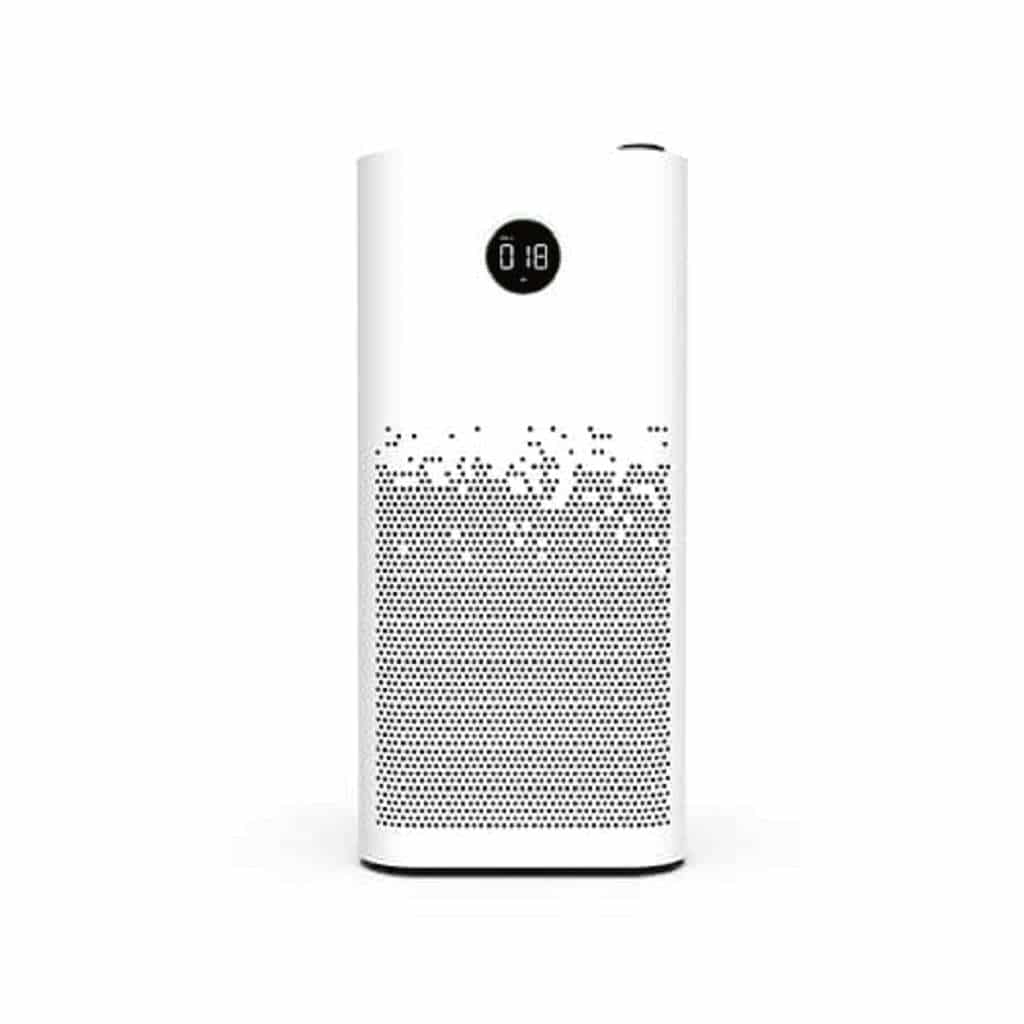
Image : Hisoair
Alt-text : HIsoair modèle HA-138
Profitez d'un mode de vie plus sain et plus confortable grâce au purificateur d'air HisoAir HA-138. Ce purificateur d'air est conçu pour éliminer de l'air que vous respirez les allergènes tels que la poussière, le pollen, les squames d'animaux et même la fumée. Il élimine également les odeurs et réduit les polluants chimiques. Le HA-138 peut être utilisé en mode filtre HEPA et en mode ioniseur.
Modèle HisoAir HA-139
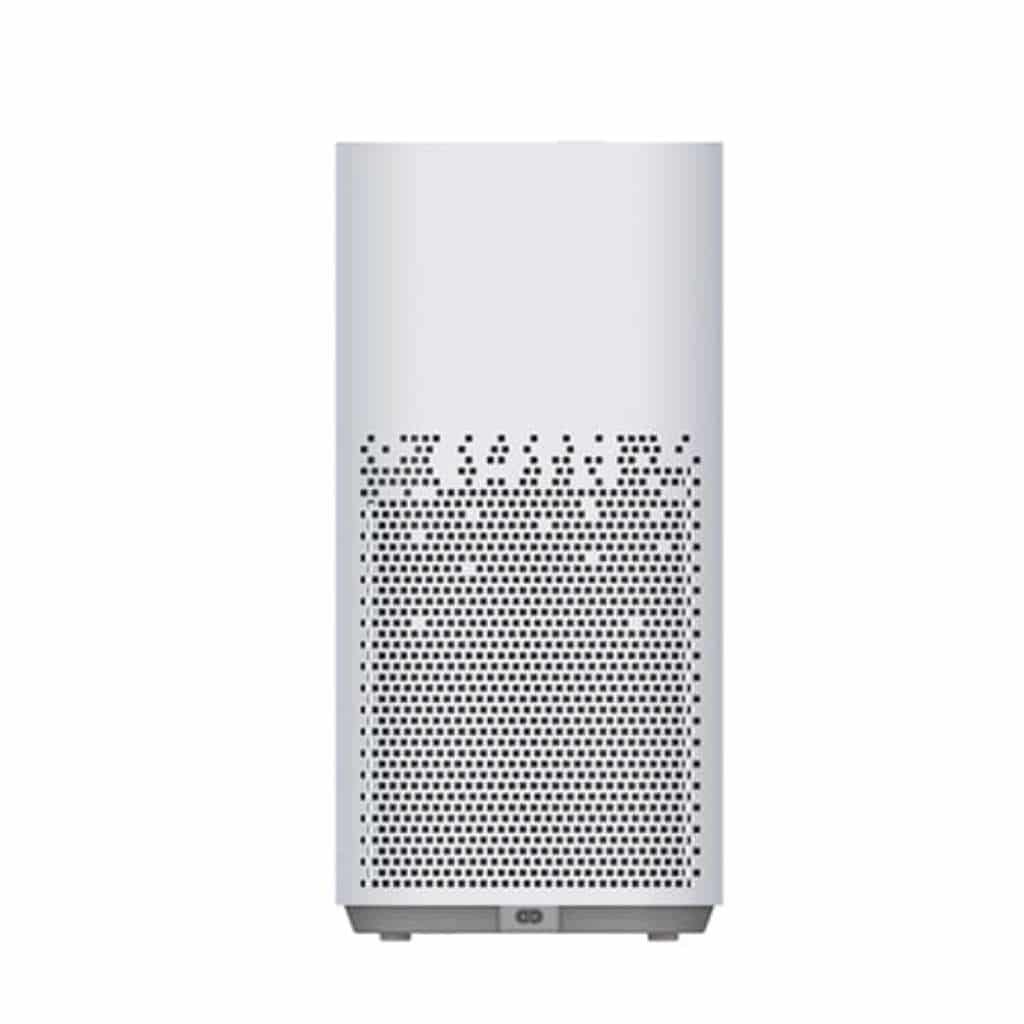
Image : Hisoair
Hisoair HA-139 est un purificateur d'air silencieux et efficace conçu pour nettoyer une pièce jusqu'à 250 m². L'appareil dispose de quatre réglages de vitesse, dont le bouton Auto. La trappe permet à la poussière et à la fumée d'être filtrées par le filtre HEPA, le filtre à particules à haute efficacité. L'ioniseur du Hisoair HA-139 utilise des ions négatifs pour éliminer l'humidité de l'air, ce qui contribue à réduire les bactéries. Vous pouvez également choisir de n'utiliser qu'un seul filtre pour plus de commodité.
HisoAir HA-1601
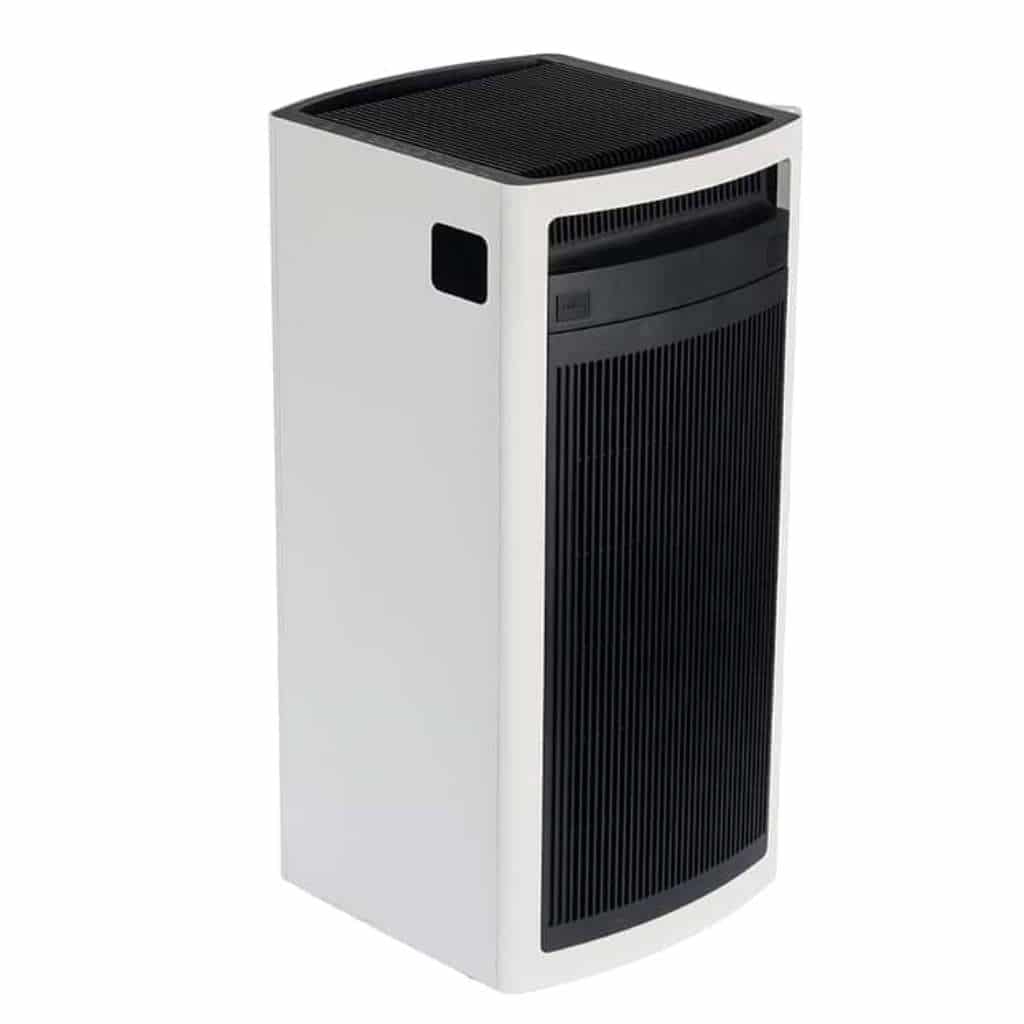
Image : Hisoair
Le purificateur d'air ambiant Hisoair modèle HA-1601 est un purificateur d'air compact, abordable et puissant. Il utilise la technologie intelligente Ionizer avec filtration HEPA et ozone pour piéger 99,99% des particules en suspension dans l'air telles que les virus, les bactéries et les allergènes aussi petits que 0,3 micron - la taille des allergènes les plus courants tels que les squames d'animaux, les spores de moisissures et les acariens. Vous pouvez ainsi bénéficier d'une protection importante contre les allergènes nocifs qui peuvent être présents dans votre maison.
HisoAir HA-1968
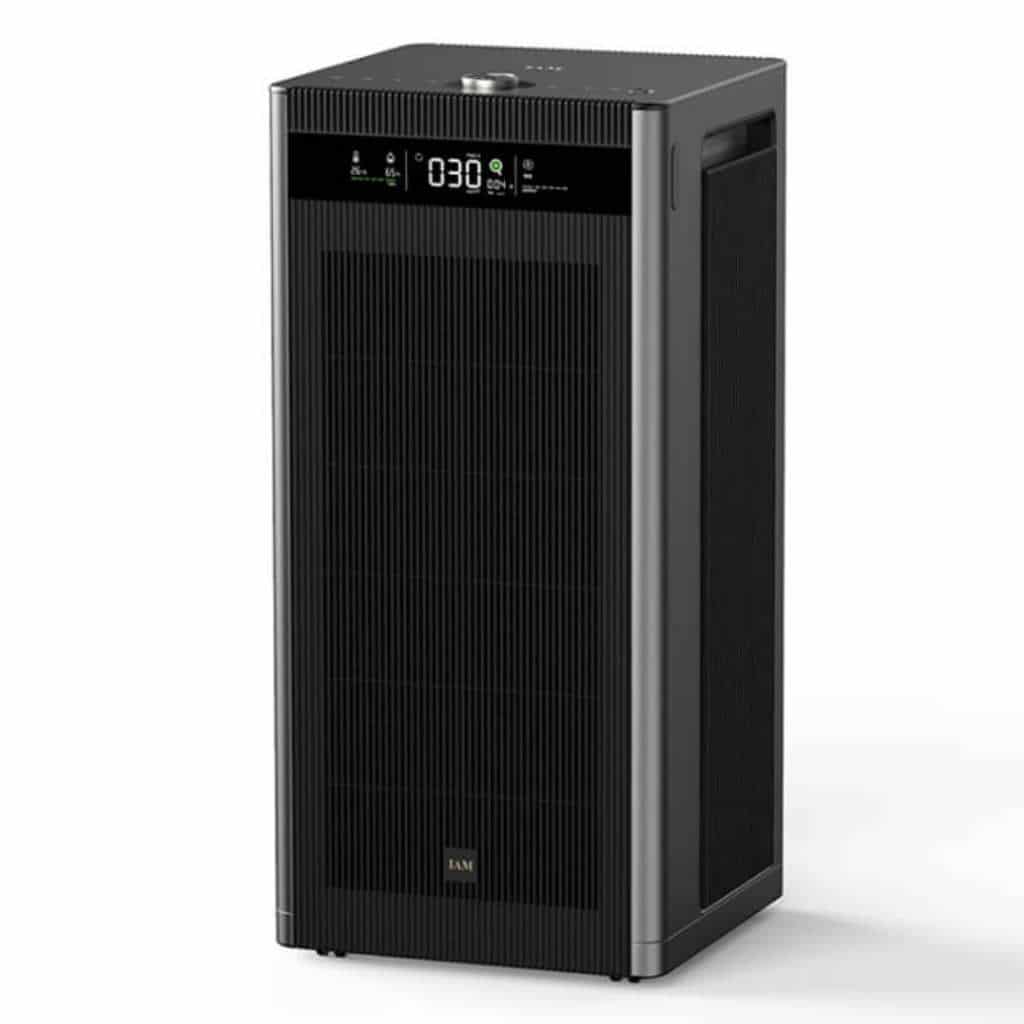
Image : Hisoair
Le HisoAir HA-1968 est un purificateur d'air prêt à l'emploi qui assainit l'air de votre chambre à coucher en quelques minutes seulement. Il élimine les odeurs, la poussière et les allergènes grâce à un ventilateur rotatif à 360 degrés qui fait passer l'air à travers ses deux filtres à charbon. Vous pouvez l'utiliser jusqu'à 24 heures sur son réglage le plus élevé avec un seul filtre ou passer d'un mode à l'autre pour personnaliser la puissance de nettoyage.
À emporter
De nombreux propriétaires d'animaux de compagnie affirment qu'ils aiment leurs compagnons à fourrure comme s'ils étaient des membres de la famille et qu'ils feraient n'importe quoi pour assurer leur santé. L'un des meilleurs moyens d'y parvenir est d'adopter un régime alimentaire, une routine d'exercice et un programme de toilettage appropriés, mais cela ne s'arrête pas là. L'air de votre maison ou de votre bureau peut être dangereux pour la santé et le bien-être de votre animal, c'est pourquoi les purificateurs d'air pour animaux de compagnie sont devenus si populaires. C'est pourquoi les purificateurs d'air pour animaux domestiques sont de plus en plus populaires. Ces appareils utilisent divers mécanismes pour purifier l'air de la maison qui pourrait être nocif pour le système respiratoire de l'animal.


